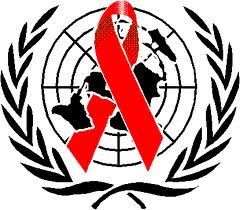The Caribbean has experienced several successes in its HIV response, the new Global Report from the Joint United Nations Programme on HIV/AIDS (UNAIDS) reveals.
Programmes to prevent mother-to-child HIV transmission, reduce new HIV infections and treat people living with the virus have yielded encouraging results.
However, in order to achieve gains across the board, there must be renewed efforts to sustain the region’s response and reach those communities that are most at risk.
Launched ahead of World AIDS Day, the document draws on 2012 country progress reports. It offers analysis on national and regional progress in relation to ten specific targets drawn from the 2011 United Nations Political Declaration on HIV/AIDS.
The report refers to 13 Caribbean countries: Antigua and Barbuda, the Bahamas, Barbados, Cuba, Dominica, the Dominican Republic, Grenada, Haiti, Jamaica, St. Kitts and Nevis, St. Lucia, St. Vincent and the Grenadines and Trinidad and Tobago.From 2009 to 2011 there was a 32 percent reduction in the number of babies contracting HIV from their mothers in the region. Additionally, the Caribbean is the only developing region that has approached the near-universal coverage of antiretroviral medicines to prevent mother-to-child transmission. 79 percent of pregnant women living with HIV now access treatment to prevent passing on the virus. Eliminating this form of HIV transmission is feasible with continued efforts to address stigma and discrimination and targeted interventions to reach more women, particularly in the Dominican Republic and Haiti.
UNAIDS Caribbean Regional Support Team Director, Dr. Ernest Massiah said: “If you are pregnant, go to your antenatal clinic early and ask for an HIV test. If you are HIV positive we can prevent your baby from being born with the virus and ensure that you get the treatment you need to live a long and healthy life.”
The Caribbean leads the world in the rates of its reduction in new HIV infections and AIDS-related deaths. From 2001 to 2011 there was a 42 percent decline in the number of the region’s people becoming infected with HIV. Deaths due to AIDS dropped by 48 percent from 2005 to 2011. This is directly due to the fact that 67 percent of people living with HIV in the Caribbean now access life-saving treatment. Massiah cautioned that while these gains are significant, they are not irreversible.
“There have been profound advances over the last decade but in order to sustain them, Caribbean governments need to put more money and effort towards ensuring that their HIV programmes can be maintained. It is in the national interest,” Massiah noted.But while the region has seen marked improvements in these areas, it must do more to address the prejudice and social inequities that operate to make some people both more vulnerable to HIV infection and less likely to access prevention, testing, treatment and care services. Young people, men who have sex with men and sex workers are among the populations that need targeted investments and more protective environments through a combination of social dialogue, increased tolerance and law reform.
“We need to confront those aspects of the epidemic that betray our most deeply seated prejudices,” Massiah said. “Without doing so the social dynamics that have led to such a pervasive epidemic will continue to operate.”
“We can build on the successes of the Americas, a region that was one of the first to eliminate measles and polio,” said UNAIDS Executive Director, Michel Sidibé recently. “There is no reason why this region cannot be the first to end AIDS.”














